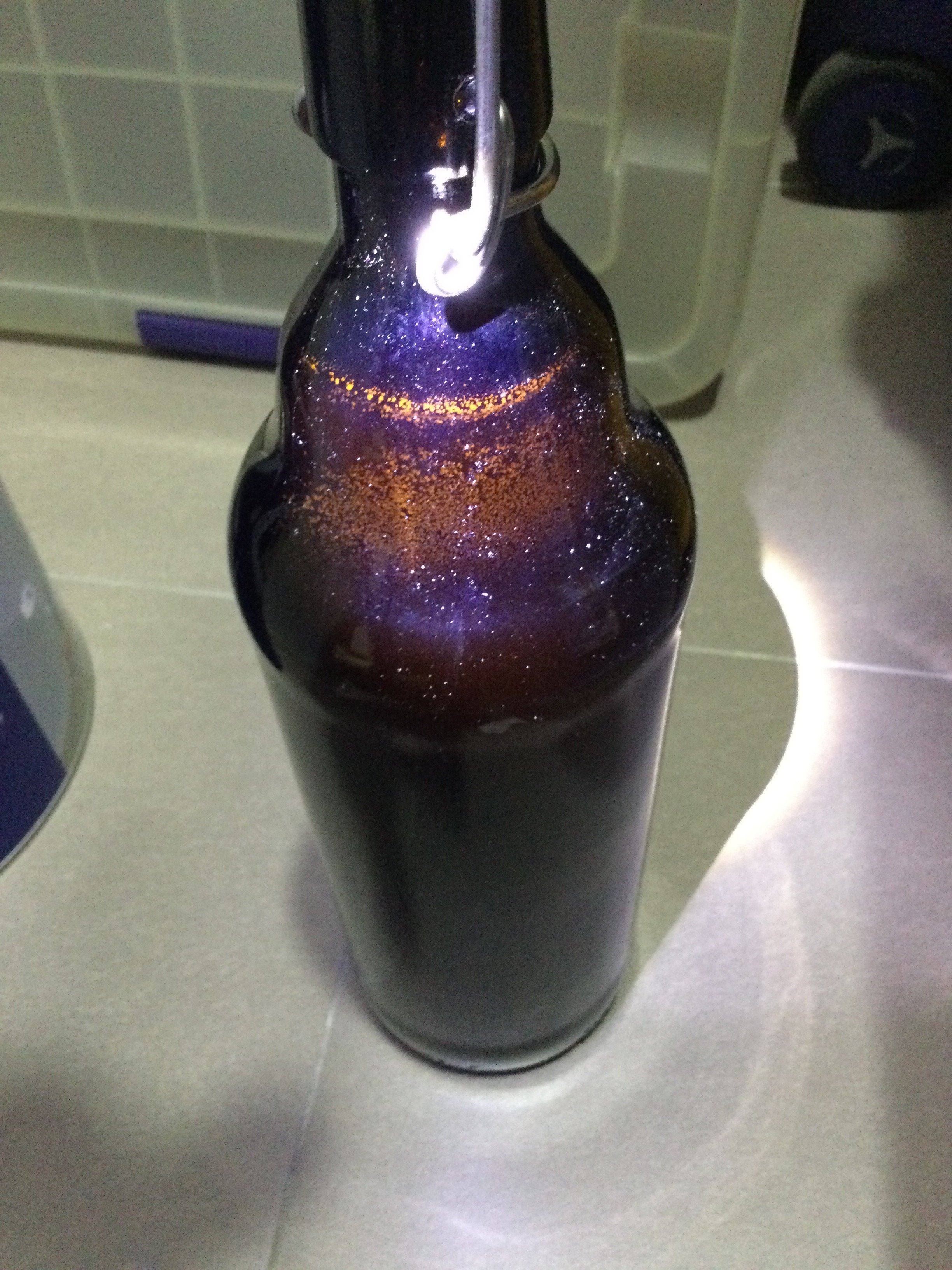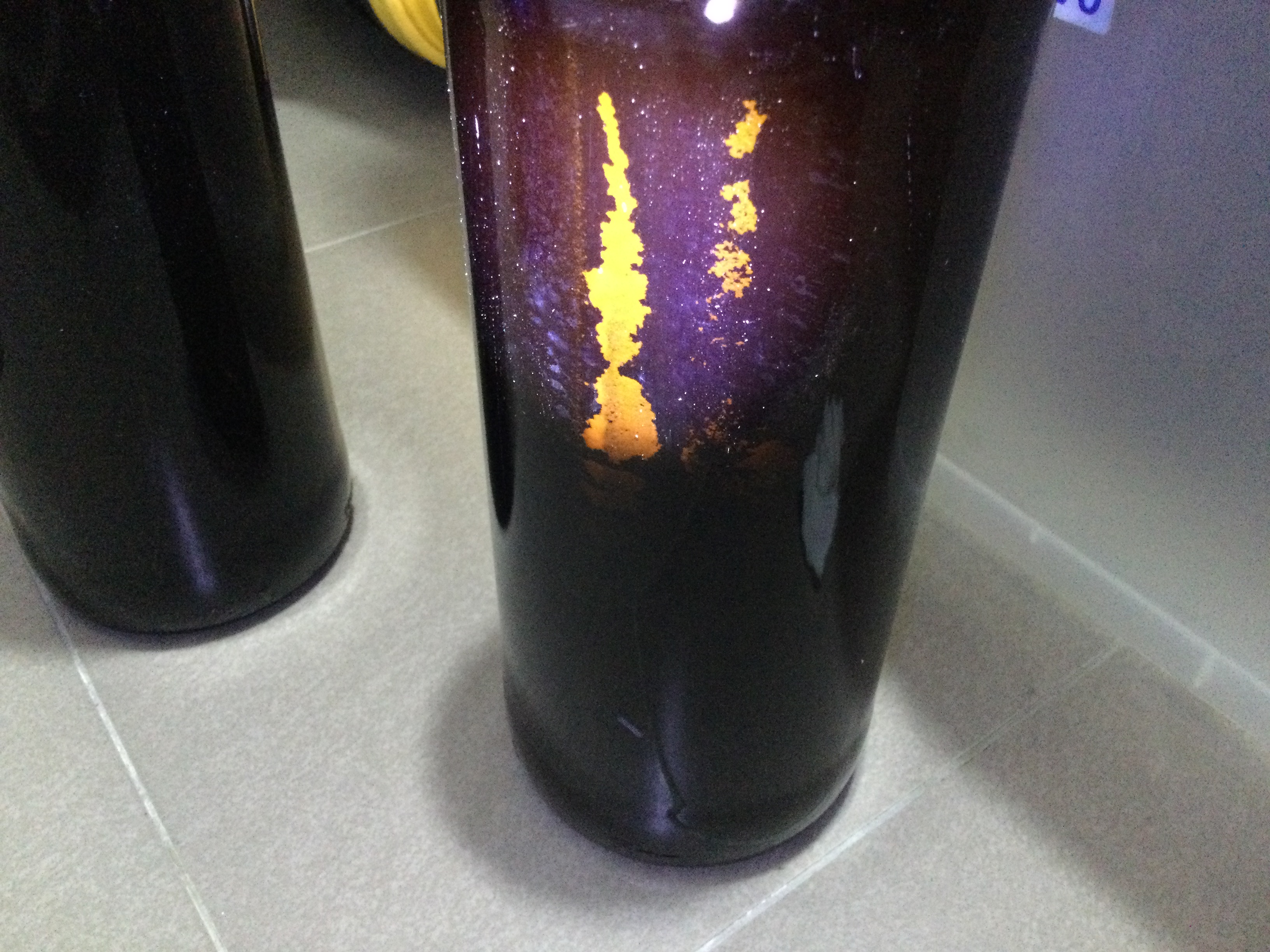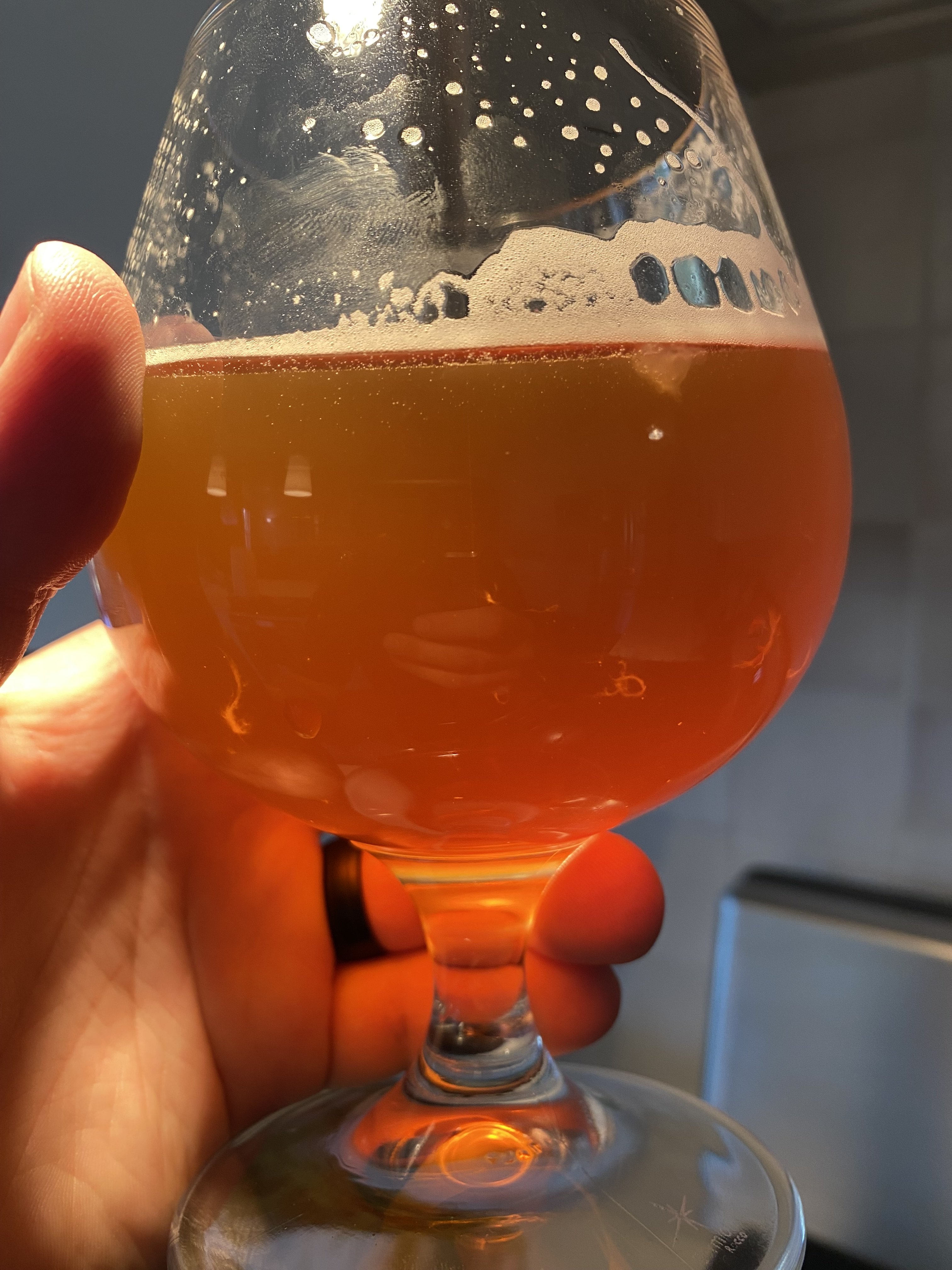Did you scrape/ladle, pick those green mold patches off the top?
It's possible to remove them completely if they're floating on top, although the green dust may disperse somewhat. Maybe you can scoop that off too.
If that beer is done fermenting, you can probably package it by racking the clear/clean beer carefully from underneath the surface, while leaving the surface mostly undisturbed, and the trub on the bottom.
Give the beer a taste, maybe it's just fine. Just don't serve to others without first informing them mold grew on there, showing the picture above, and the potential health risk of consuming products contaminated with mold.
Something was or got into your fermenter or beer at some point, resulting in the green mold patches. Mold needs moisture and oxygen to grow, indicating the headspace CO2 was compromised. So review your cleaning and sanitation regimen. A dirty siphon or racking hose left damp can harbor mold, spores, and bacteria that get transferred, then grow under the right conditions, and voilà!



![Craft A Brew - Safale BE-256 Yeast - Fermentis - Belgian Ale Dry Yeast - For Belgian & Strong Ales - Ingredients for Home Brewing - Beer Making Supplies - [3 Pack]](https://m.media-amazon.com/images/I/51bcKEwQmWL._SL500_.jpg)

























































